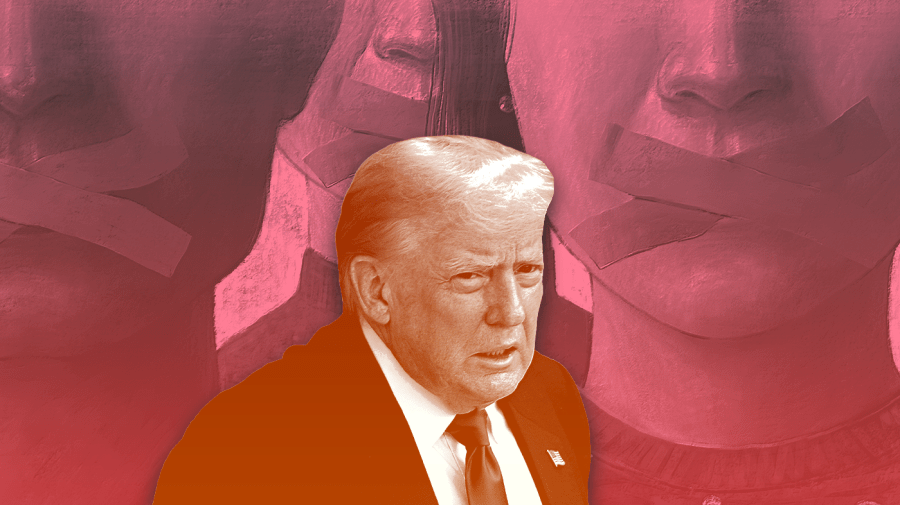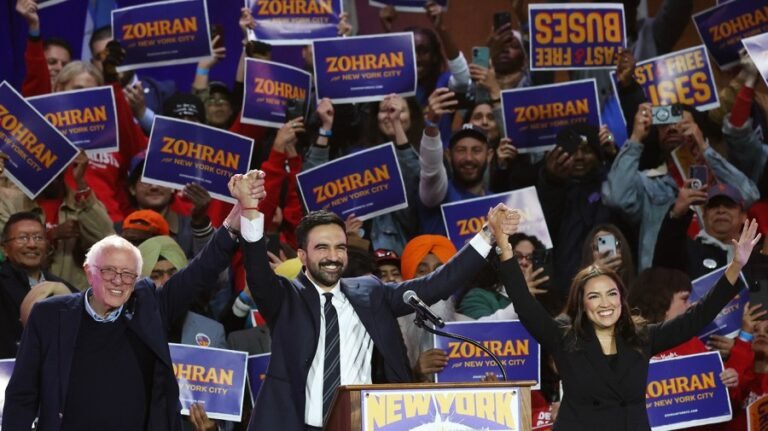
The Motion Picture Production Code of 1930 codified the moral prescriptions of 1920s conservatism. Today, President Trump has resurrected that impulse — not to police films, but to criminalize dissent.
Under his Sept. 25 National Security Presidential Memorandum 7, the administration is recasting certain forms of political expression as criminal conspiracy, and mobilizing the full weight of federal law enforcement as if confronting organized crime. As I argue in my new book, “Conservative at the Core,” this initiative shows that Trump is the culmination, not the contradiction, of a longstanding American conservative tradition.
The memorandum brands “anti-fascist” rhetoric as a threat, declaring that such rhetoric “has become the organizing rallying cry used by domestic terrorists to wage a violent assault against democratic institutions, constitutional rights, and fundamental American liberties.” As triggered by alleged “anti-fascist” expressions, Trump ordered that “all Federal law enforcement agencies with investigative authority shall adopt strategies similar to those used to address violent crime and organized crime to disrupt and dismantle entire networks of criminal activity.”
The list of proscribed conduct resembles, in its breadth and vagueness, the prohibitions once enforced by the Production Code, which constitutional scholars long ago condemned as egregious First Amendment violations. And like the code, the language in Trump’s order is elastic enough to reach speech and advocacy that fall outside any ordinary definition of criminality.
For instance, the code stipulated that “No picture shall be produced that will lower the moral standards of those who see it.” Trump’s order triggers investigations for alleged “hostility towards those who hold traditional American views on … morality.”
The Production Code insisted that religion must not be “lowered in the minds of the audience.” Prohibited language “includes the words, God, Lord, Jesus, Christ — unless used reverently.” Trump’s order identifies “anti-Christianity” and “hostility towards those who hold traditional American views on … religion” as “common threads animating this violent conduct.”
The Production Code demanded that “The sanctity of the institution of marriage and the home shall be upheld.” Trump’s order singles out “hostility towards those who hold traditional American views on the family.”
The Production Code banned what its framers viewed as the racial extremism of its time, noting that, “Miscegenation (sex relationships between the white and black races) is forbidden.” Trump’s September order proscribes the administration’s version of “extremism” on “race,” which would include any expression of support for diversity, equity and inclusion initiatives, and claims that discrimination is systematic.
The Production Code forbade the portrayal of “Sex perversion or any inference to it.” Trump’s sweep on “extremism” or “gender” would, presumably, include expressions of support for the rights of gay and transgender persons.
The code stipulates that, “The use of the Flag shall be consistently respectful.” Trump’s order lists among its triggers the catch-all category of “anti-American” expression.
Trump’s Sept. 25 order has become lost amid the furor over the indictment of former FBI director James Comey, and his Sept. 22 designation of the mythical Antifa as a terrorist organization. Yet it represents the most draconian crackdown on free speech since the wartime Espionage Act of 1917 that Congress repealed shortly after the war in 1921. Trump’s order criminalizes speech through an executive initiative that goes beyond criticism of the government, outlawing ideas that the ruling party finds repugnant.
In effect, it turns the opposition into criminals, which is the hallmark of authoritarian regimes.
Moreover, the memorandum asserts causal links between anti-conservative speech and political violence without proof. But the empirical record points in another direction. A 2024 National Institute of Justice study found that since 1990, “far-right extremists have committed far more ideologically motivated homicides than far-left” actors. Far-right extremists “took more than 520 lives,” versus 78 for far-left extremists — a ratio of nearly seven to one. The administration purged this study from the Justice Department’s website shortly before Trump issued his Sept. 25 order, raising further concerns about the politicized suppression of inconvenient facts.
Legal and constitutional remedies are both necessary and urgent. Free-speech advocates must challenge Trump’s order as an unconstitutional abridgment of First Amendment protections, violating the civic space essential to democratic life.
George Washington, who presided over the Constitutional Convention of 1787, cautioned, “If men are to be precluded from offering their sentiments on a matter, which may involve the most serious and alarming consequences that can invite the consideration of mankind, reason is of no use to us; the freedom of speech may be taken away, and dumb and silent we may be led, like sheep, to the slaughter.”
Supreme Court justices committed to the Constitution’s original meaning and to the robust protection of political expression should take note. The government may lawfully punish true criminal conduct, but it cannot — consistent with the First Amendment — imprison ideas, proscribe unpopular beliefs, or transform legitimate political opposition into felons by administrative fiat.
Allan J. Lichtman is a professor of history at American University and the author of “Conservative at the Core: A New History of American Conservatism.”

